New NSF-funded institute to study ecosystem evolution
The Evolving Meta-Ecosystems Institute will convene experts from across biological disciplines to enable a deeper understanding of ecosystem resilience in the face of rapid climate change
Maddie Rocklin Associate Vice President, 90 West
Woodwell Climate Research Center launched a new six-year project, the Evolving Meta-Ecosystems (EvoME) Institute. The Institute is one of four major awards recently announced by the National Science Foundation, each receiving $15 million. Bringing together experts from 14 institutions, the institute focuses on improving scientific and public understanding of how ecosystems are responding—and will continue to respond—to a rapidly changing climate.
“Ecosystems are complex communities, made up of many different species that have evolved with each other and their shared environments over long periods of time,” said Woodwell Senior Scientist and Institute Director, Dr. Linda Deegan. “As the planet warms, however, ecosystems are undergoing accelerated rates of change, especially in the Arctic where temperatures are rising at nearly four times the global rate. Will ecosystems fall apart, muddle along in a reduced state, or can species adapt to keep pace with climate change?”
“Arctic species and ecosystems are uniquely adapted to their extreme environment, and we seek to understand if they can now adapt to climate change. Moreover, these species are not only important ecologically, but they also provide food
and livelihoods for people,” added Mark Urban, University of Connecticut Professor of Ecology and Evolutionary Biology and Institute co-lead. “It is critical that we understand how species and ecosystems will respond to rapid Arctic warming as well as the implications for local and global climate policy and action.”
Through the EvoME Institute, scientists will work to answer these questions, bringing together experts from diverse disciplines and backgrounds to collaborate on research efforts across the Arctic and generate new biological insights. As part of this work, the institute also aims to foster a new generation of cross-disciplinary biologists, with special attention to increasing the inclusion and retention of researchers from backgrounds currently underrepresented in the field.
EvoME will also invite reporters into the research process, providing a unique opportunity to partner directly with on-the-ground EvoME scientists, and empowering a deeper understanding of the Arctic and its climate challenges through collaborative journalism and storytelling.
More information, including collaborators and updates, can be found at: https://woodwellclimate.org/evome
Woodwell Climate and University of Alaska Fairbanks host public showcase of the Permafrost Discovery Gateway
The event brought together researchers local community members and permafrost experts to share new technology and learn more about permafrost thaw and its impact on people living in Fairbanks and beyond
Earlier this month, Woodwell Climate Research Center and University of Alaska Fairbanks, with support from Google.org, hosted An Evening at the Museum with the Permafrost Discovery Gateway at the Museum of the North in Fairbanks, bringing together researchers, local community members and permafrost experts to learn more about permafrost thaw and what it means for people living in Fairbanks and beyond.
The Permafrost Discovery Gateway (PDG) is a free, interactive, web-based tool that expands public access to big data–or, the geospatial files and products that would otherwise be too large for anyone to view on their own personal computer–and other key information about permafrost thaw. Last summer, it entered a new project phase, supported by a $5 million grant and pro bono Fellowship from Google. org, to create a first-of-its-kind, open-access resource, building on its existing capabilities and incorporating satellite data and artificial intelligence (AI) technology to enable near real-time tracking of Arctic permafrost thaw.
In 2024, the PDG team, with support from 11 full-time Google.org Fellows, have developed scalable machine learning workflows that help scientists put research into production to create new data products about permafrost thaw features, like lake changes and icerich permafrost. They’ve also incorporated a storytelling element in the updated user interface that showcases and zooms in on heavily-impacted communities, making it easier to discover, explore, and derive meaning from the data.
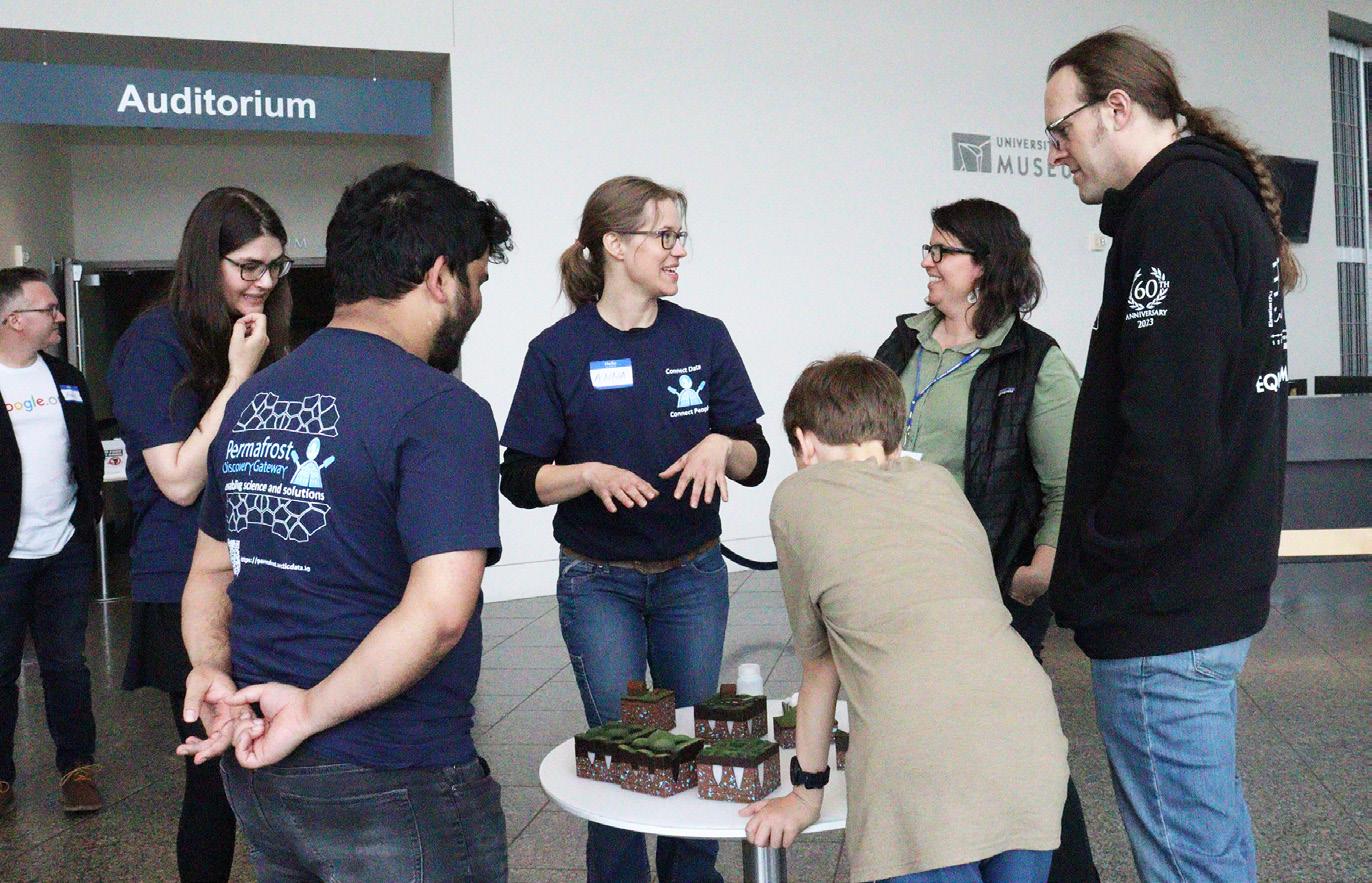
 left: Dr. Heidi Golden holds an Arctic grayling from lower Oksrukuyik Creek, Alaska. / photo by Mark Urban top right: Dr. Anna Liljedahl, project lead, explains permafrost thaw to a family at the open house. / photo by Sarah Moore bottom right: Members of the Permafrost Discovery Gateway team tour the permafrost tunnel. / photo by Sarah Moore
Maddie Rocklin Associate Vice President, 90 West
left: Dr. Heidi Golden holds an Arctic grayling from lower Oksrukuyik Creek, Alaska. / photo by Mark Urban top right: Dr. Anna Liljedahl, project lead, explains permafrost thaw to a family at the open house. / photo by Sarah Moore bottom right: Members of the Permafrost Discovery Gateway team tour the permafrost tunnel. / photo by Sarah Moore
Maddie Rocklin Associate Vice President, 90 West
03 May 2024
The event was an opportunity for local community members of all ages to learn more about the PDG and the latest project updates, and for PDG team members to hear from Fairbanks residents about what it’s like to live on permafrost. Project workshops were also held throughout the week, bringing together PDG team members from all over the world, including researchers from across seven institutions, Google. org Fellows, policymakers, and other key stakeholders, to address project challenges and improve user experience.
“We have so much to learn from each other, whether you are a scientist or software engineer on the PDG development team who has never been to Alaska or seen permafrost before, or a Fairbanks local with a lifetime of experience living on permafrost, or a science career,” said Dr. Anna Liljedahl, Woodwell Climate Associate Scientist and project lead. “Our goal with the event at the museum was to create that bridge and enable that exchange to happen, where new technology meets on-the-ground expertise. I think everyone left the museum that night with admiration of each other and excitement about what we can do together.”
“AI has tremendous potential to help those working to solve our biggest global issues, like understanding the impacts of thawing permafrost, reach their goals faster and at half the cost,” said Jen Carter, Head of Tech and Volunteering at Google.org. “Google.org is proud to have full-time Fellows supporting Woodwell Climate Research Center to improve timely tracking of permafrost thaw using advanced AI technology, and were thrilled to stand alongside Woodwell to share the latest from this project with the Fairbanks community, many of whom are feeling the real time impacts of permafrost thaw in their daily lives, and will be able to use this resource to inform critical climate mitigation and adaptation strategies.”
The event was centered on a presentation about the PDG, which included some sneak-peaks on what researchers have learned from the big data about permafrost. Before and after the presentation, attendees were able to use Virtual Reality headsets to experience a virtual tour of the permafrost tunnel, touch a core of permafrost, do a 3D puzzle of typical ice-rich permafrost features, view a rolling art slide show on permafrost features of prints made by artist Ina Timling, explore a few posters prepared by the team, bring home samples from a permafrost landscape coloring book, and part-take in a guessing game on how many ice-wedge polygons the team has mapped.
Learn more about the Permafrost Discovery Gateway at: https://arcticdata.io/catalog/portals/permafrost
New to Engineering? No Problem. Research Assistant Zoë Dietrich builds her own carbonmonitoring chambers
These low-cost, floating chambers autonomously measure emissions from ponds in the Arctic and the Amazon
Zoë Dietrich Research Assistant
“Why not float the aquatic greenhouse gas chamber on a surfboard?” Tropics Program Director Dr. Mike Coe suggested in one of our team meetings, and I could feel the gears in my brain begin turning. I started a sketch… If mounted on a surfboard, we would need a method to open the chamber, flushing it with outside air. Back in my office, I asked Google “What turns electrical energy into mechanical energy?” Google was quick to respond: “motor.” Right, thank you, Google. Next, I typed, “Motor that pushes something up.” Google replied: “linear actuator.” Three clicks later and I had ordered my first linear actuator for 35 bucks.
Three days later, that linear actuator sat expectantly on my desk. One red wire and one black wire, “12V DC” printed on its side. I turned back to Google, “How to wire a linear actuator?” Opening the first hit, I skimmed through the photos and diagrams. None of them striking my fancy, I moved on to the second hit: step-by-step instructions, clear photos, even opensource code to program my Arduino microcontroller board— nice! Within an hour, my linear actuator was extending and retracting on command, ready to be mounted in an autonomous greenhouse gas chamber.
Adding the actuator to my sketch, I popped into Senior Research Scientist Kathleen Savage’s office to hear her thoughts. Savage always has new ideas brewing, and she suggested adding a feature that would allow the chamber to function on water and on land. The chambers are the product of a Fund for Climate Solutions (FCS) grant led by Savage to quantify carbon dioxide and methane emissions from small water bodies like lakes, ponds, and reservoirs. Because there are no low-cost and auto-sampling tools available on the market, we have been developing a new instrument to measure these emissions.
04 Monthly Newsletter
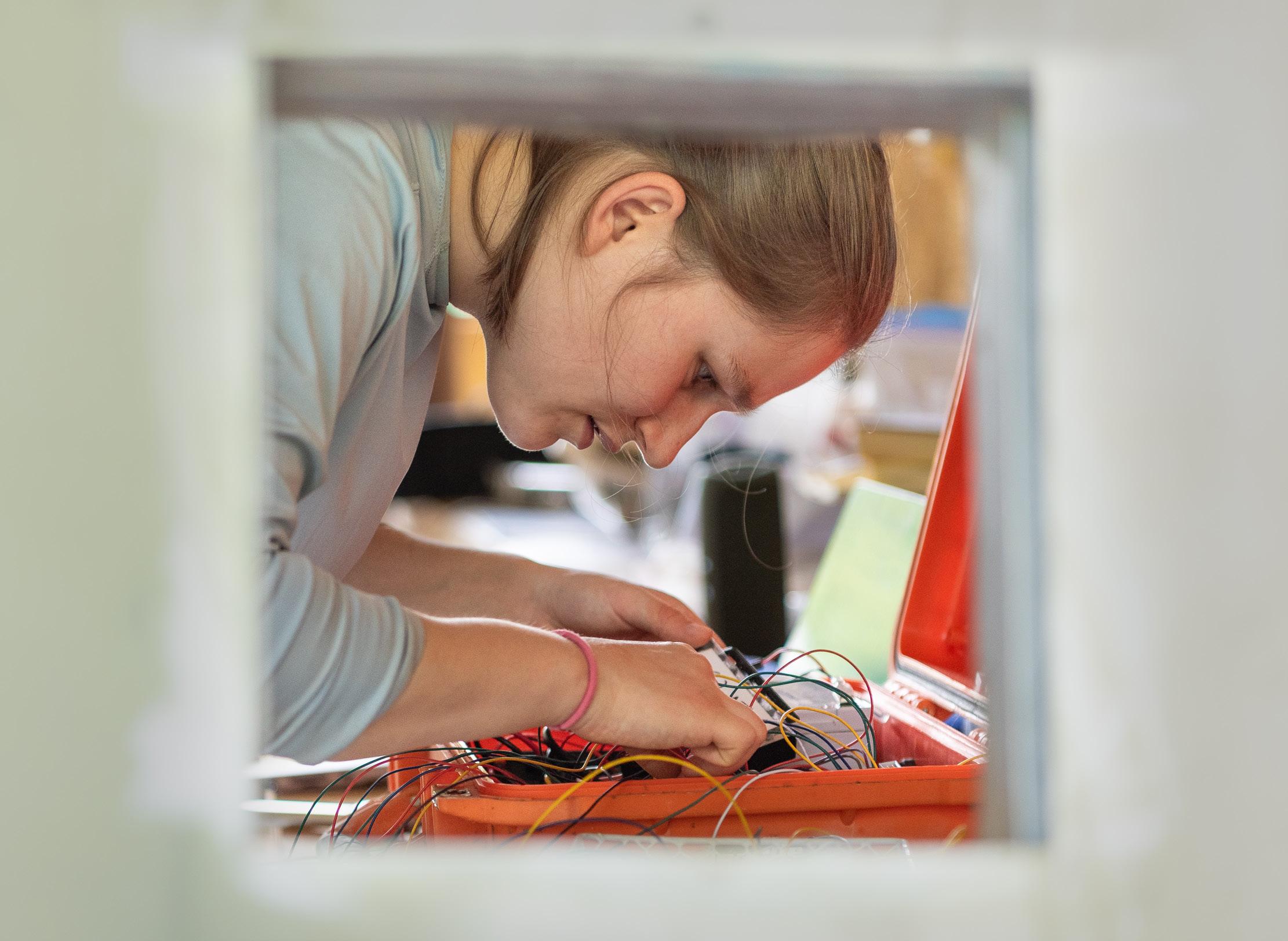
DIY science
“Chamber” is a fancy word for the upside-down buckets we use to measure how fast greenhouse gasses are released from different surfaces. By resting a bucket upside-down on a patch of soil or grass or water and measuring how fast gas concentrations increase or decrease inside the bucket, we can calculate a “flux” of gas over a set area and time. Common methods of measuring fluxes require manually collecting gas samples from a chamber to be processed in a lab, or connecting the chamber to a high precision analyzer that can cost around $40,000. These methods are costly in salary time and equipment, limiting where, when, and how often people can sample—usually daytime and in accessible areas and times of the year. We need new low-cost and autonomous systems that can measure around the clock to improve carbon emissions estimates. The recent commercialization of cheaper sensors and control systems to operate them, like the Arduino microcontroller, now make these developments possible.
I’m building a new floating chamber that measures aquatic fluxes autonomously using a $15 methane sensor and a $78
carbon dioxide sensor, improving previous designs published by Dr. David Bastviken’s group at Linköping University in Sweden. Powered by a solar panel and battery, the sensors measure gas concentrations, temperature, and humidity inside the chamber every 30 seconds. The data is stored on an SD card and transmitted within 50 meters via radio. The radio transmission allows us to check that the chamber is functioning properly from the shore and to see chamber measurements in real time. When gas concentrations have increased enough to discern a flux, the linear actuator extends to open the chamber, flushing the interior with outside air before retracting to close the chamber again for another flux measurement. Calibrating the chamber with a high precision analyzer in the field shows the low-cost sensors perform well, with an accuracy of approximately 1 ppm for methane and 3 ppm for carbon dioxide.
Field deployment
I first tested chamber prototypes last July on agricultural reservoirs at the Tanguro Field Station in Brazil. At the end of our field campaign, I left one chamber deployed to see how long the electronics would last and which components might
above:
Zoë Dietrich checks on the internal mechanism of one of her chambers. / photo by Mitch Korolev
May 2024 05
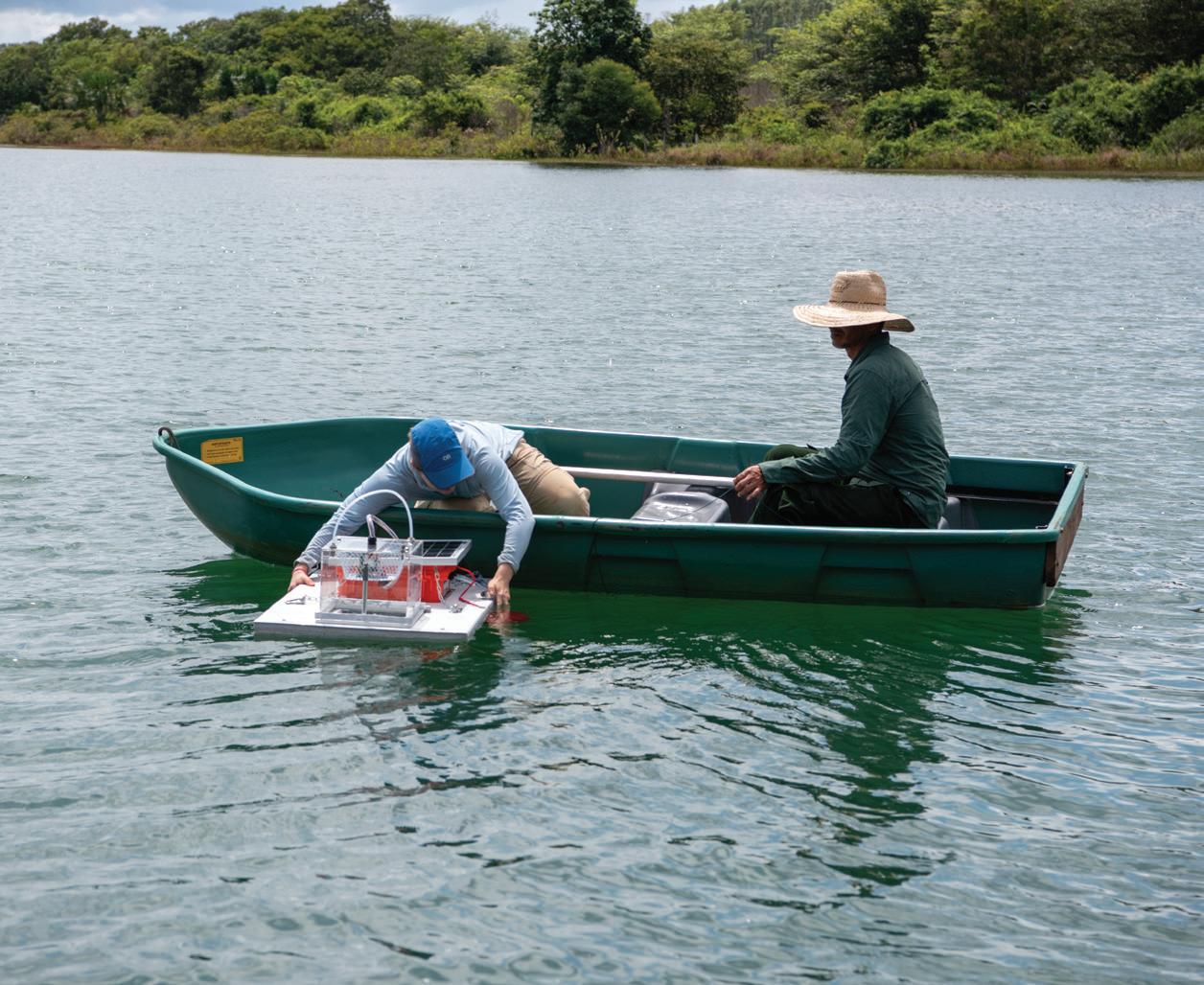
eventually fail. After helping me deploy and calibrate the chamber, field technician Raimundo “Santarém” Quintino monitored it, checking its “vital signs” via radio every few weeks. In January, he noticed the linear actuator had stopped pushing the chamber open.
During a follow-up field campaign in March, I brought a couple of extra linear actuators and five more chambers to deploy on additional reservoirs at Tanguro. Tanguro staff and I worked together to modify chamber components that didn’t function well in the first deployment. These modifications included swapping the materials of the floating foam bases and improving the mounting mechanisms of the linear actuator and chamber hinge. Our adjustments were informed by recommendations from a Laboratory Operations Manager at the University of Maine in Orono (Christopher London), whom I met while doing fieldwork at the nearby Howland Research Forest. Woods Hole locals, such as John Driscoll and Fred Palmer of the Woodwell Climate Facilities department, kite foiler and carpenter Tad Ryan, and employees at Eastman’s Hardware, have also offered transformative recommendations on building materials and techniques to stabilize the floating chambers.
Working hands-on with the floating chambers on the reservoirs, Santarém, Dr. Leonardo Maracahipes-Santos, Tanguro’s Scientific Projects Coordinator, and Sebastião “Seu Bate” Nascimento of Tanguro Field Station have made invaluable improvements to the chamber design and deployments. A few of their contributions include advice on safe deployment locations, monitoring and collecting data from the chambers over time, and constructing aluminum and galvanized steel components for the floating bases. They also designed a new mount for the most recent chamber addition —a bubble trap that uses
an inexpensive pressure sensor to autonomously measure the volume of gas released as bubbles.
Freshwater ecosystems worldwide emit nearly half as much carbon dioxide and methane as fossil fuel combustion. On the Amazon-Cerrado frontier, where Tanguro is located, there are hundreds of thousands of small agricultural reservoirs, which are important, yet overlooked, greenhouse gas sources. These artificial ponds—installed to provide drinking water for cattle, facilitate road crossings, or supply energy at the farm scale—can persist for decades, creating low-oxygen conditions that drive methane production. Monthly sampling of six reservoirs over a year by Water Program Director Dr. Marcia Macedo revealed high methane and carbon dioxide emissions, varying with season and reservoir size. But these measurements did not capture the significant variability that can occur on daily, monthly, and annual time scales, including transient “hot spots” and “hot moments” of high greenhouse gas emissions.
This lack of frequent measurements hinders climate scientists’ ability to integrate emissions at the reservoir scale in order to estimate cumulative greenhouse gas emissions at the landscape scale. The autonomous floating chambers will address that gap, enabling comprehensive carbon monitoring and modeling of the reservoirs.
From the tropics to the Arctic
Additionally, these chambers are versatile tools that can be used across different environments. Funded by a subsequent FCS grant, six new floating chambers will accompany me to the Yukon-Kuskokwim Delta, Alaska, this summer to measure greenhouse gas emissions from Arctic ponds. The chambers will supply the frequent data necessary to constrain the LAKE model utilized by Arctic Program scientists Dr. Elchin Jafarov and Andrew Mullen. The model predicts variations in carbon emissions from ponds, providing insight into processes regulating methane and carbon dioxide. By applying the LAKE model to both Arctic ponds and Amazon reservoirs, we can gain a deeper understanding of their impacts on regional greenhouse gas budgets.
“Deploying floating chambers will streamline the process of gathering aquatic data and enhance the temporal resolution of the data, which is vital for modeling and currently absent in existing datasets,” notes Jafarov.
Problem-solving and collaboration
While calibrating the low-cost sensors in our boat one March afternoon, Santarém and I noticed the linear actuator on another nearby chamber wasn’t retracting and extending as it should. Expecting another replacement was in store, we tuned into the radio and popped open the electronics case to check for “symptoms.” Blinking lights and radio silence revealed an entirely new and perplexing issue causing the malfunction.
above: Dietrich and Santarém deploy another chamber on a reservoir at Tanguro Research Station. / photo by Mitch Korolev
06 Monthly Newsletter
Building this system from the ground up over the last year, the one constant has been mind-bending electronics puzzles that keep me up at night. As a biogeochemist by training, these problems usually require some tinkering, a dictionary, a lot of Googling, and sometimes bugging electrical engineers down the street at the Woods Hole Oceanographic Institution (Lane Abrams) and Spark Climate Solutions (Bashir Ziady), whose advice and contributions have substantially improved the chambers’ electrical designs. Each problem can usually be traced to a perfectly logical, satisfying solution, leaving me feeling wiser and excited to tackle the next one. I’ve tracked this new problem down to something potentially involving a “memory-leaking variable declaration” in my new bubble trap programming code. I might’ve fixed it with a “watchdog timer.” Both are new words for me, too. If the watchdog timer doesn’t pan out, Santarém and I will try another fix.
Designing, building, and testing these chambers has been an iterative and constantly evolving process. What works well? What doesn’t? How can we do this more simply? Using less energy? For a lower cost? How can we improve the design so that other researchers can easily build these floating chambers as well? Soon we plan to publish open-source instructions detailing how to build and troubleshoot the floating chambers—I have already sent preliminary instructions to three interested research groups. I’m lucky to collaborate with many talented people from Woods Hole to Maine and Brazil, many of whom are as new to chambers and fluxes as I am to engineering. Nevertheless, these floating chambers incorporate a brilliant flourish from each of them.
In the news: highlights
Nearly a dozen Woodwell Climate scientists were quoted in 170 news stories this month. Our work on forests and fire, both boreal and tropical, was particularly prominent. Here are a few highlights:
Wired quoted Dr. Brendan Rogers on growing boreal fires, and how controlled burns may help, in an article on “black carbon.”
A Nature article covers Woodwell’s pilot firefighting program to protect permafrost in Yukon Flats National Wildlife Refuge, quoting Dr. Brendan Rogers and partner Jimmy Fox, Yukon Flats Refugee Manager.
Brooke Woods was quoted by The Guardian, critiquing a new salmon management plan announced by Alaska officials.
Reuters quoted Dr. Manoela Machado in an article about record fires in the Brazilian Amazon, which was republished around the world and shared on radio stations across the U.S.
Onging & upcoming events

NOW–JULY 14
In Flux: Perspective on Arctic change
An exhibition of new works inspired by Arctic research of Woodwell Climate scientists.

28,
change: Charting a path to a positive future
Dr. Max Holmes will be the featured speaker at MBL’s Friday Evenings Lectures series. The lectures are free and presented both in person and online.
Learn more about at: woodwellclimate.org/events
WCVB quoted Dr. Jen Francis in an article looking ahead to Massachusetts’ summer weather.
The National Academies released a report from a workshop on the greenhouse gas emissions from wildland fires—the report prominently highlights and contextualizes Woodwell Climate research.
Dr. Scott Zolkos provided context on Arctic warming in a Guardian article about Alaskan rivers turning orange due to minerals released from thawing permafrost. His quote was included in dozens of other stories in multiple languages.
An article in South First about a heatwave in Kerala, India quoted findings from Woodwell Climate’s heat analysis for the region, produced in collaboration with the Kerala State Disaster Management Authority, GeoHazards International, and GeoHazards Society.
JUNE
8 PM Climate
07 May 2024

CLIMATE SCIENCE FOR CHANGE 149 Woods Hole Road Falmouth, MA, 02540-1644 woodwellclimate.org/give @woodwellclimate #sciencefortheworld Donations play an important role in securing the future of Woodwell Climate Research Center’s work—and help safeguard the health of our planet for generations to come. Please help us to conserve paper. To receive this newsletter electronically, please send your email address to info@woodwellclimate.org. cover: The full Permafrost Pathways team was recently on campus for workshops and meetings, including a visit to the facility where flux towers are assembled and tested before installation in the field. Here, Patrick Murphy explains how a component of the tower functions. / photo by Jess Howard
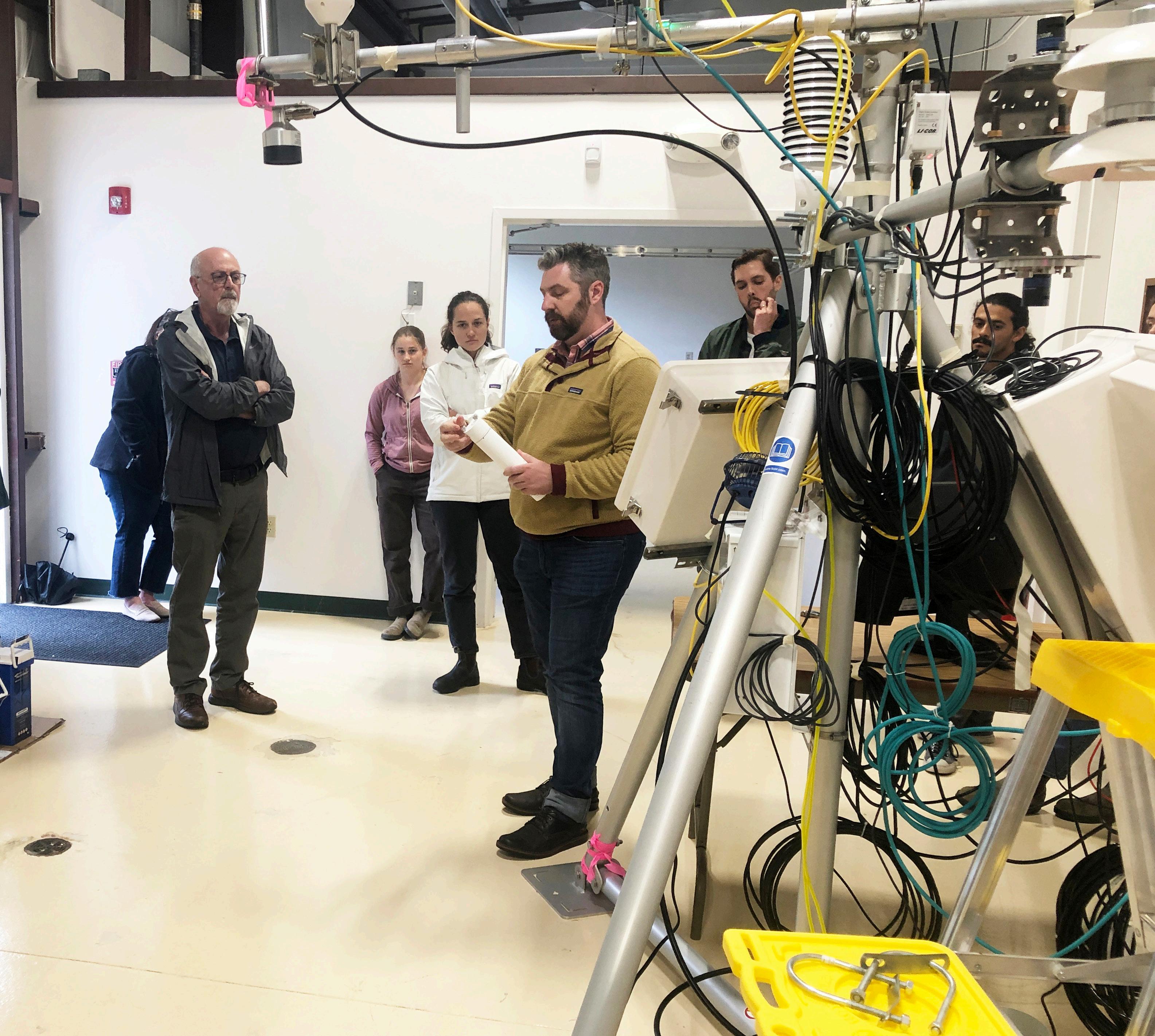
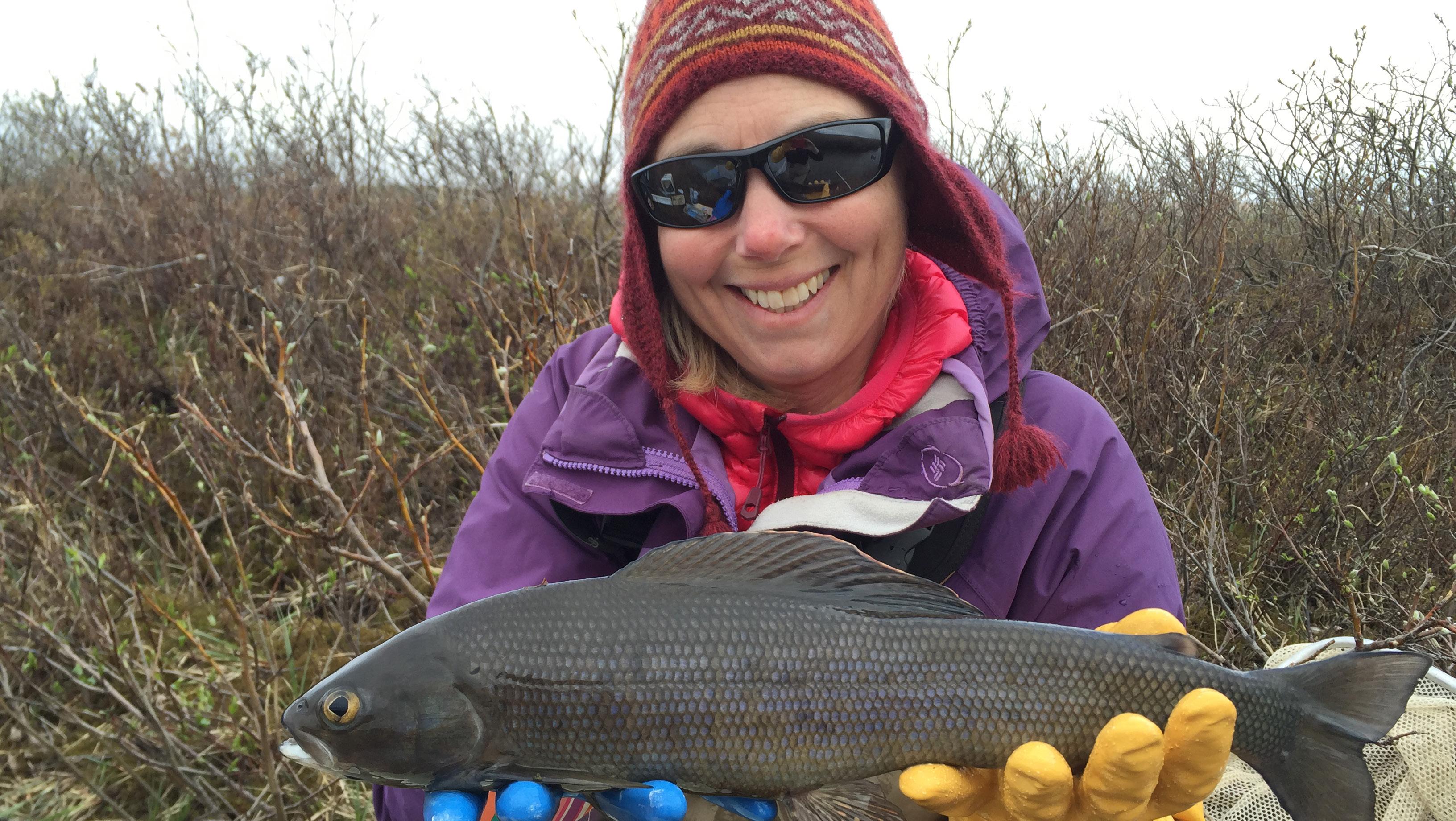


 left: Dr. Heidi Golden holds an Arctic grayling from lower Oksrukuyik Creek, Alaska. / photo by Mark Urban top right: Dr. Anna Liljedahl, project lead, explains permafrost thaw to a family at the open house. / photo by Sarah Moore bottom right: Members of the Permafrost Discovery Gateway team tour the permafrost tunnel. / photo by Sarah Moore
Maddie Rocklin Associate Vice President, 90 West
left: Dr. Heidi Golden holds an Arctic grayling from lower Oksrukuyik Creek, Alaska. / photo by Mark Urban top right: Dr. Anna Liljedahl, project lead, explains permafrost thaw to a family at the open house. / photo by Sarah Moore bottom right: Members of the Permafrost Discovery Gateway team tour the permafrost tunnel. / photo by Sarah Moore
Maddie Rocklin Associate Vice President, 90 West







